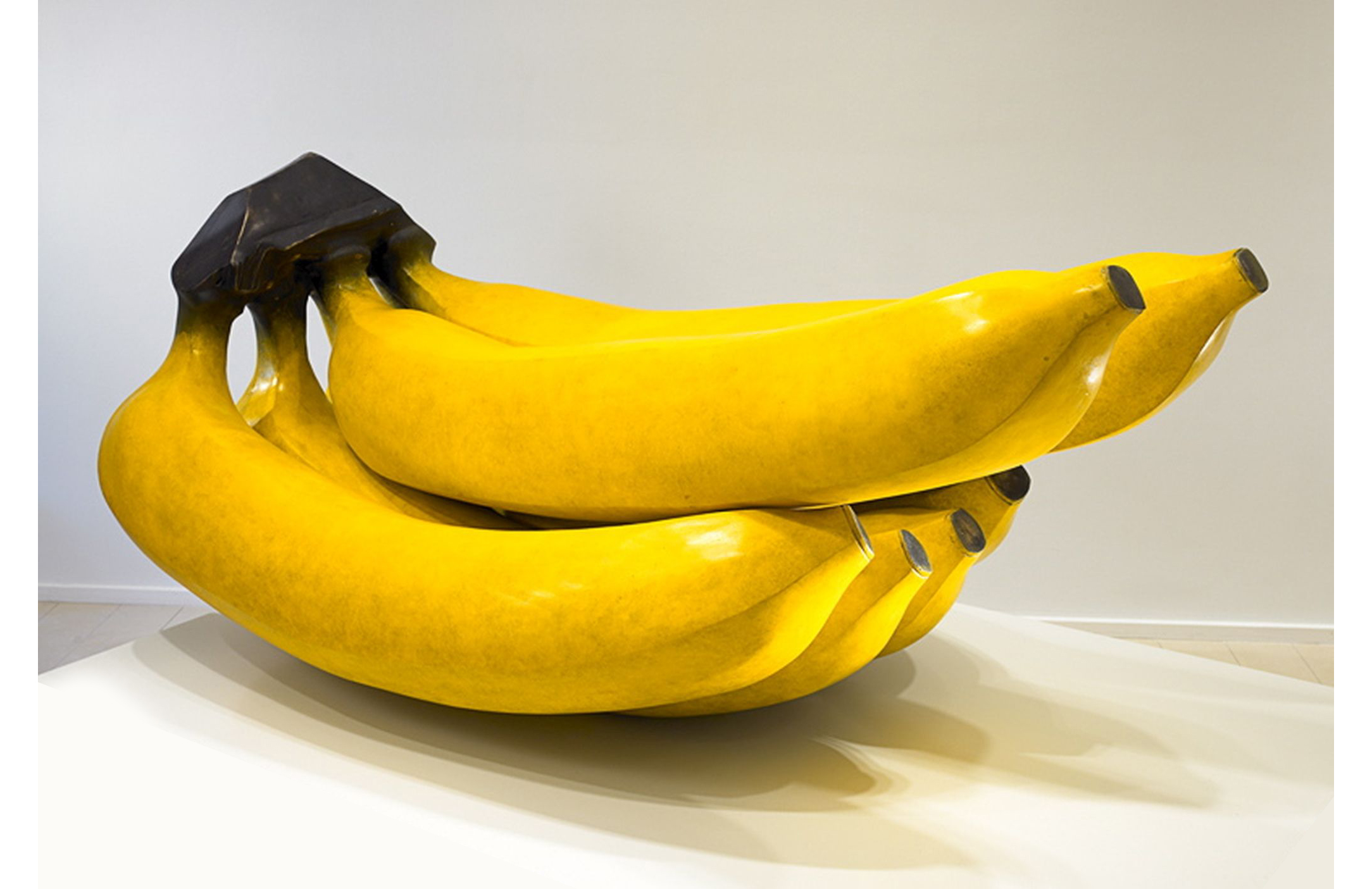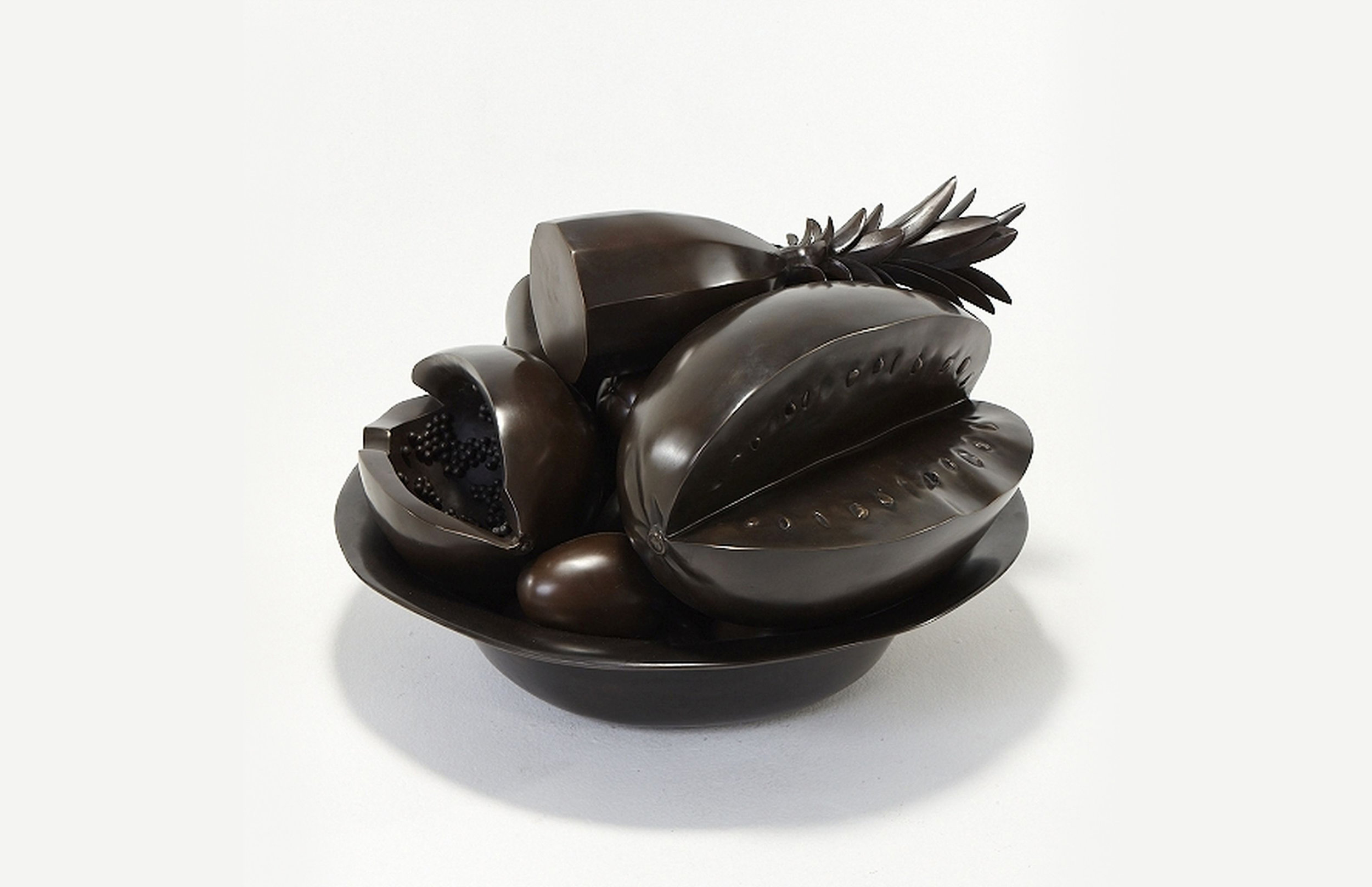


Ana Mercedes Hoyos
Born in 1942, in Bogota, Columbia
Ana Mercedes Hoyos was one of the most important representatives of Colombian art, whose work ranged from abstractionism to realism, and from figurative to geometrical art. Her consistent creative work allowed her to receive public recognition at a national and international level.
Ana Mercedes Hoyoswas born in Bogotá in 1942. She began her journey through the world of art from an early age by traveling around Europewith her parents, and visiting the most important museums in the world. She ultimately became familiar with all the great historical artworks.
Her foray as an artist took place in the sixties. While being a student at Universidad de los Andes (and the disciple of the critic and scholar Marta Traba), she was profoundly influenced by the Pop Art movement that absorbed the attention of many artists of the time. At this stage, she produced a series of billboards paintings, which reaffirm her penchant for the themes of commercial consumerism and color planimetry as present in Pop Art.
In her subsequent paintings made in the late sixties, she makes references to architecture, an interest inherited from her father. Her concerns with the geometric and constructive forms prevailed in the series Ventanas (Windows). In it, the management of color can be seen in the approach to the shadows and the semi-darkness, through which she explores space. This interest would then take her, during the seventies, to approach the opening space of the window. She focused on the printed space beyond the geometry to reduce the architectural reference on the canvasses itself; only represent the sky, or even better, the framing of the firmament, which was practically white, although it was possible to identify some bluish tones, with some effort. This body of work that the artist called Atmósferas (Atmospheres)constitutes her minimalist stage. With it, she won First Prize in the National Artists Salon of 1978.
Gradually, Hoyos would move away from the inflexibility of modern movements to return to figurative painting and the use of representation. The first paintings she made after Atmósferas are works in which the geometry play a major role and where the curved line expresses itself. In the early eighties, Ana Mercedesturns her sights to the soil, giving importance to the line of the horizon. The series known as Paisajes (Landscapes)involves the emergence of color.
By the mid-eighties, her approach to the idea of the still life after Ventanas, Atmósferas and Paisajes is inspired by major artists of art history such as Caravaggio, Zurbarán, Van Gogh, Jawlensky and Lichtenstein. This body of work includes Girasoles (Sunflowers), with which she pays homage to Van Gogh, el Primer Bodegón en la Historia del Arte (the First Still Life in Art History), to Caravaggio, and el Gran Desconocido (the Great Unknown), which honors Jawlensky.
Subsequently, there is a conceptual shift, which happens by accident during a family trip to Cartagena. Her first encounter with which would later become the core of her work took place at the tourist beaches and the Bazurto market; The Palangana, the metal and circular basin, full of fruit, which are arranged in balance. According to the artist, the organization of the container matched the research on constructivism and cubism that she was conducting during her review of the history of art. Ever since that moment, a strong relationship would grow between Ana Mercedes Hoyos and the community of San Basilio de Palenque.
Thus, as of 1986 and supported by photographic images she took, the stage of the Bodegones de Palenque (Still Lifes of Palenque)began, where the interpretation of the containers of fruit or basins would become the central focus of her work. In them, the incidence and careful arrangement of light, the fragmented analytical compositions where geometry becomes essential, and other subtle and suggestive arrangements of color, are able to imprint, on each fruit basin, on her bazurtos or on the celebrations, an indisputable ingredient of existence.
These still lifes are just the beginning of the investigation conducted by Ana Mercedes Hoyos, where her works will explore the customs of the palenqueros such as boxing, community games from which the Vara de Premio is derived, as well as the procession parades and celebrations where the colored dresses of women stand out.
Later, Ana Mercedes fixed her attention on the outfits that the young girls wear during the processions and celebrations, especially the bows. These are presented as an illustration of a universe in which, the returning to the synthesis of geometry and color, are distinctive cultural elements that symbolize freedom, friendship and solidarity gathered with the union of the two bows.
Ana Mercedes Hoyos’paintings belong to a Latin American collective imagination and reveal an attitude and approach to the race and black culture that is completely different. Her works are a thoughtful look and a testimony of life of these communities, which were initially included in the history of Colombian Art by Guillermo Wiedemann and found a voice in the different generations of Colombian artists.
Selected Solo Exhibitions
2017
Ana Mercedes Hoyos: Abstracción Convergente , Nueveochenta Gallery, Colombia, Bogota
2014
Ana Mercedes Hoyos, Nueveochenta Gallery, Colombia, Bogota
2008
Ana Mercedes Hoyos, Addison/Ripley Gallery, USA, Georgetown
Selected Group Exhibitions
2015
Folding: Line, Space & Body/ Latin American Women Artists Working Around Abstraction, Henrique Faria, New York, USA, Upper East Side
Selected Exhibitions
1995
Associated American Artists, New York
Latin American Women Artists 1915-1995 The National Museum of Women in the Arts, Washington, D.C.
1994
Casa de la Cultura de Mexico, Bogotá
Galería Tovar y Tovar, Bogotá
Yokohama Museum of Art, Yokohama, Japan
1993
Galería Fernando Quintana, Bogotá
Galeria Ramis F. Barquet, Monterrey, Mexico
Museo Reyo, Roldanillo, Colombia
Yoshii Gallery, New York
1992
Galeria Espacio San Salvador, El Salvador
Museum of Modern Art, Rio de Janeiro, Brazil
Galería Alfred Wild, Bogotá
Colombian Contemporary Art, Expo Sevilla 92, Seville, Spain
Galería El Museo, Bogotá
1991
Rempire Gallery, New York
Galería Epoca, Santiago, Chile
National Museum Colculture, Colombia
Galeria Espacio San Salvador, El Salvador
Colombian Center, Permanent Mission of Colombia to the UN, New York
Three Colombian Artists, Museum of Modern Art, Cali, Colombia
1990
Rempire Gallery, New York
Colombian Art, Fuji Museum of Tokyo, Tokyo
Rempire Gallery, New York
1989
Galería El Museo, Bogotá
6 at 6: Contemporary Colombian Art, Rempire Gallery, New York
Women Artists, Galería Alfred Wild, Bogotá
1988
Museum of Modern Art, Bogotá
Museo La Tertulia, Cali, Colombia
1987
Galería Alfred Wild, Bogotá
1986
National Press Club, Washington, D. C.
Abstract Vision, MOCHA New York, New York
1985
Galeria Confamiliar, Barranquilla, Colombia
XVIII International Biennial of São Paulo, São Paulo, Brazil
A Vision of Colombia, Santillana Foundation, Santillana del Mar, Spain
One Hundred Years of Colombian Art, Museum of Modern Art, Bogotá
1984
1st Biennial of Havana, Havana, Cuba
Colombia: Half a Century of Painting and Sculpture, National Anthropological Museum, Mexico City, Mexico
Galería Garces Velasquez, Bogotá
1983
Art from the Workshops, Art From the Streets, School of Fine Arts, Paris
Colombian Paintings, Cultural Agenda on Colombia,
Palacio de Bellas Artes, Mexico City, Mexico
1982
Contemporary Colombian Graphics, Colombian Embassy, Bonn, Germany
Colombian Art From the Sixties, Museum of Modern Art, Bogotá
American Relations of New York, New York
1981
Centro Colombo-Americano, Bogotá
Inaugural Exhibition, Galería Santa Fe, Bogotá
El Paisaje Liberrimo, National Art Gallery, Caracas, Venezuela
IV Biennial Art Exhibition of Medellin, Medllin, Colombia
1980
Premio, Dibujo Miró, La Fundacion Miró, Barcelona
Canvases from Five Artists, Galería San Diego, Bogotá
Panama Institute of Art, Panama City, Panama
Galería Condor, Barranquilla, Colombia
1979
Galería Belarca, Bogotá
La Galería, Buenos Aires, Argentina
II Biennial Painting Exhibition, Cagnes-Sur-Mer, France
Prints and Drawings of Colombia, Biblioteca Luis Angel Arango, Bogotá
XI International Biennial, Museum of Modern Art, Tokyo
1978
Art Now III: Latin America – Sensible Geometry, Museum of Modern Art, Rio de Janeiro, Brazil
Eugenio Mendoza Foundation, Caracas, Venezuela
Galería San Diego, Bogotá
1977
X Paris Biennial, Paris
New people of the World, Bogotá National Museum, Bogotá
1976
Museum of Modern Art, Bogotá
1975
1900-1975: Landscape, Museum of Modern Art, Bogotá
1974
Galería Belarca, Bogotá
1972
Institute of Latin American Art, Santiago, Chile
Biennial Exhibition, House of the Americas, Havana, Cuba
1971
Graphic Artists of Colombia, Biblioteca Luis Angel Arango, Bogotá
1970
Erotic Art, Galería Belarca, Bogotá
Salon of the Americas, Museo La Terulia, Cali, Colombia
1968
Environmental Spaces, Museum of Modern Art, Bogotá
